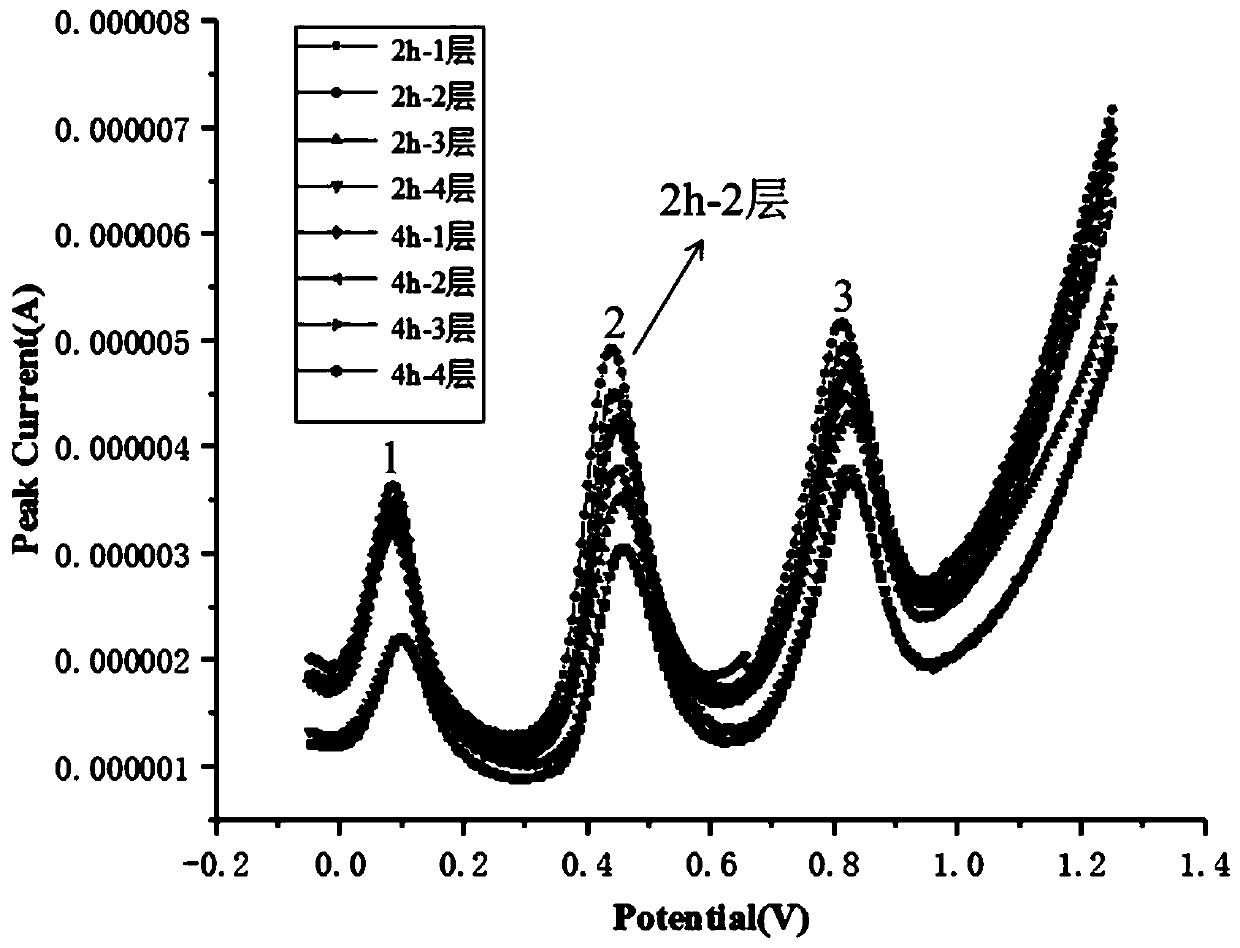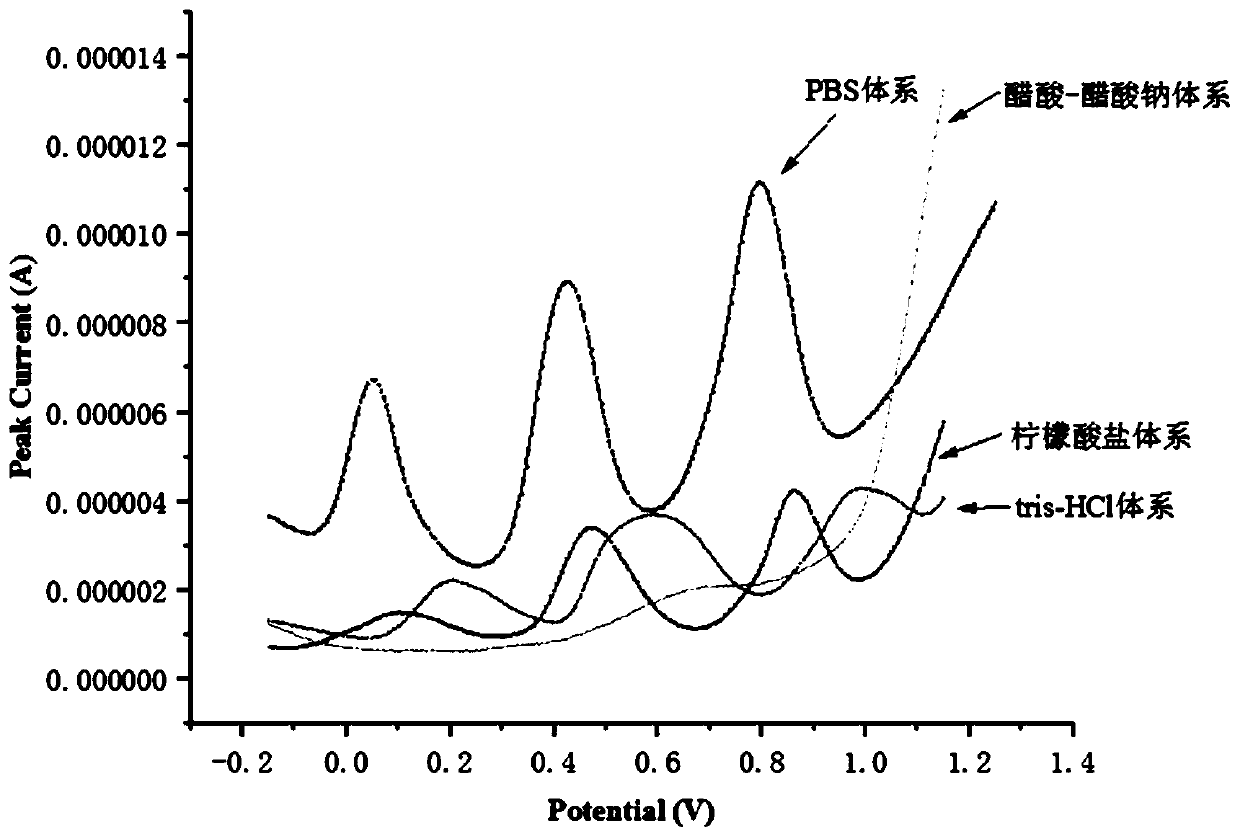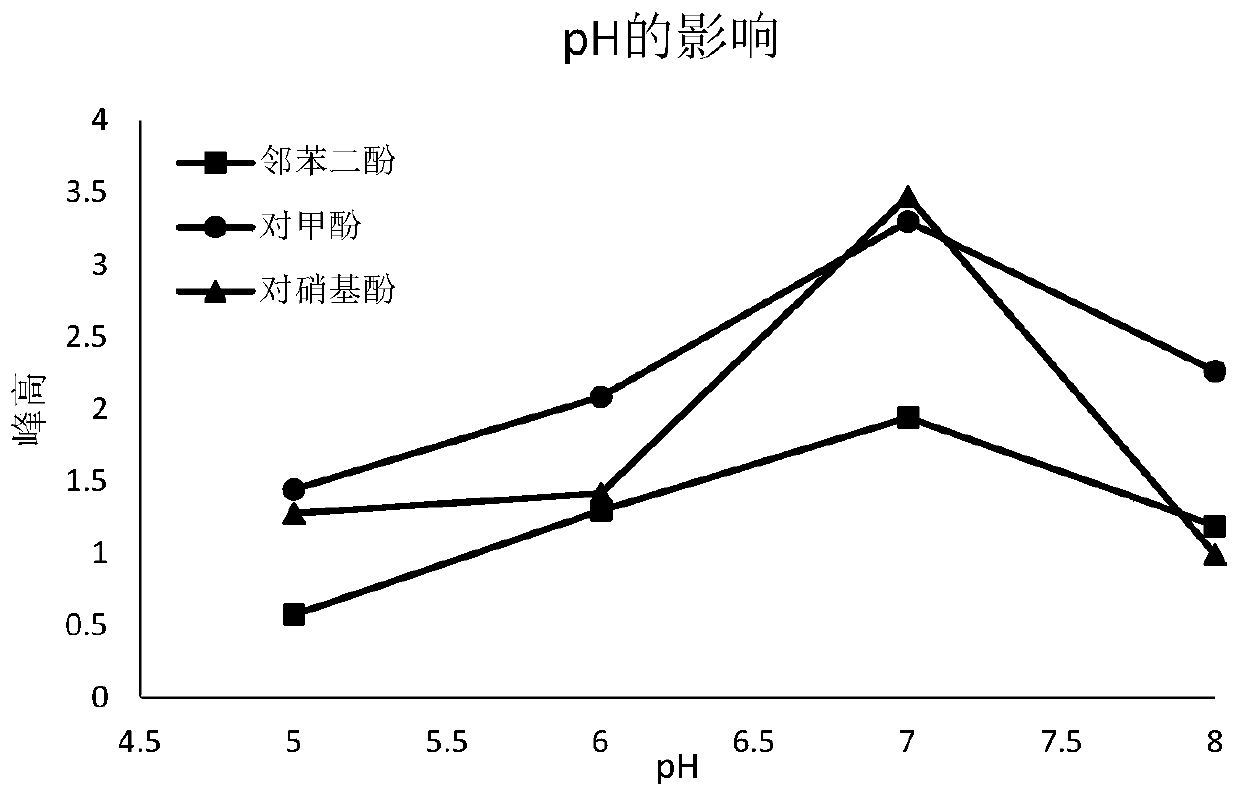Preparation method of nano-material modified electrode and method for determining phenolic compounds in water body
A technology of phenolic compounds and nanomaterials, applied in the fields of material electrochemical variables, nanotechnology, analytical materials, etc., can solve the problems of insufficient portability and time-consuming instruments, and achieve the effect of improving accuracy and reducing system errors.
- Summary
- Abstract
- Description
- Claims
- Application Information
AI Technical Summary
Problems solved by technology
Method used
Image
Examples
preparation example Construction
[0028] (1) Preparation of nano-hybrid materials: under magnetic stirring, add 10 mg to 20 mg of Ce(NO 3 ) 3 ·6H 2 O, then add 2mL-3mL ammonia water dropwise to the mixed solution, then transfer the mixed solution to a polytetrafluoroethylene reactor, and react at 150°C-200°C for 6h-8h. The reacted product is obtained after being centrifuged by a centrifuge with a rotating speed of 10000rpm-12000rpm for 30min-45min and washed several times with distilled water and ethanol. The finally obtained product is dried in a vacuum oven at room temperature to obtain a graphene oxide / cerium oxide nano-hybrid material, which is ready for use.
[0029] (2) Construction of electrochemical sensor: graphene oxide / cerium oxide (GO / CeO 2 ) The nano-hybrid material is dispersed in the perfluorosulfonic acid aqueous solution in the ultrasonic wave, and the final concentration is 2.0 mg·mL -1 ~3.0mg·mL -1 . Then the resulting GO / CeO 2 The nano-hybrid material was ultrasonically dispersed for...
Embodiment 1
[0034] Embodiment 1: the preparation of nano-hybrid material
[0035] Preparation of nano-hybrid materials: Add 20mg Ce(NO 3 ) 3 ·6H 2 O, and then 2 mL of ammonia water was added dropwise to the mixed solution, and then the mixed solution was transferred to a 150 mL polytetrafluoroethylene reactor, and reacted at 180° C. for 8 h. The reacted product was obtained by centrifuging at 12000 rpm for 45 min and washing with distilled water and ethanol several times. The finally obtained product was dried in a vacuum drying oven at room temperature and was ready for use.
Embodiment 2
[0036] Embodiment 2: Construction of electrochemical sensor
[0037] GO / CeO 2 The nano-hybrid material was dispersed in an aqueous solution of perfluorosulfonic acid with a mass concentration of 0.05% in ultrasonic waves, and the final concentration was 3.0 mg·mL -1 . The resulting graphene oxide / cerium oxide (GO / CeO 2 ) 20 mL of the nano-hybrid material was ultrasonically dispersed for 30 min to obtain a nano-composite mixture, and then two 10 mL portions were taken for standing.
[0038] A portion of 10mL was allowed to stand for 2 hours, then pipette 2.5mL each time from top to bottom into 5mL centrifuge tubes, and transferred to four 5mL centrifuge tubes in total, and then pipette 2μL from each centrifuge tube Different layers of nanocomposite mixed solution were drip-coated on the surface of the screen-printed electrode, and dried to prepare four nanomaterial-modified electrodes. The electrode prepared by taking the top 2.5mL was recorded as an electrode that was left ...
PUM
| Property | Measurement | Unit |
|---|---|---|
| concentration | aaaaa | aaaaa |
| volume | aaaaa | aaaaa |
| concentration | aaaaa | aaaaa |
Abstract
Description
Claims
Application Information
 Login to View More
Login to View More - R&D
- Intellectual Property
- Life Sciences
- Materials
- Tech Scout
- Unparalleled Data Quality
- Higher Quality Content
- 60% Fewer Hallucinations
Browse by: Latest US Patents, China's latest patents, Technical Efficacy Thesaurus, Application Domain, Technology Topic, Popular Technical Reports.
© 2025 PatSnap. All rights reserved.Legal|Privacy policy|Modern Slavery Act Transparency Statement|Sitemap|About US| Contact US: help@patsnap.com



